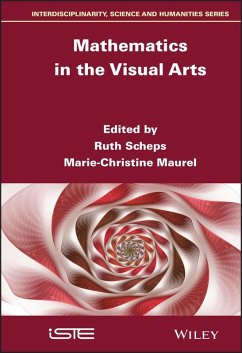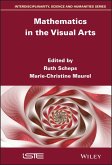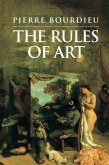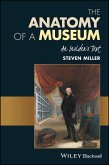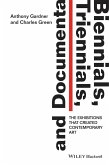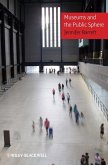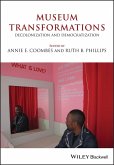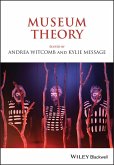Mathematics in the Visual Arts (eBook, ePUB)
Redaktion: Scheps, Ruth; Maurel, Marie-Christine
139,99 €
139,99 €
inkl. MwSt.
Sofort per Download lieferbar

0 °P sammeln
139,99 €
Als Download kaufen

139,99 €
inkl. MwSt.
Sofort per Download lieferbar

0 °P sammeln
Jetzt verschenken
Alle Infos zum eBook verschenken
139,99 €
inkl. MwSt.
Sofort per Download lieferbar
Alle Infos zum eBook verschenken

0 °P sammeln
Mathematics in the Visual Arts (eBook, ePUB)
Redaktion: Scheps, Ruth; Maurel, Marie-Christine
- Format: ePub
- Merkliste
- Auf die Merkliste
- Bewerten Bewerten
- Teilen
- Produkt teilen
- Produkterinnerung
- Produkterinnerung

Bitte loggen Sie sich zunächst in Ihr Kundenkonto ein oder registrieren Sie sich bei
bücher.de, um das eBook-Abo tolino select nutzen zu können.
Hier können Sie sich einloggen
Hier können Sie sich einloggen
Sie sind bereits eingeloggt. Klicken Sie auf 2. tolino select Abo, um fortzufahren.

Bitte loggen Sie sich zunächst in Ihr Kundenkonto ein oder registrieren Sie sich bei bücher.de, um das eBook-Abo tolino select nutzen zu können.
Art and science are not separate universes. This book explores this claim by showing how mathematics, geometry and numerical approaches contribute to the construction of works of art. This applies not only to modern visual artists but also to important artists of the past. To illustrate this, this book studies Leonardo da Vinci, who was both an engineer and a painter, and whose paintings can be perfectly modeled using simple geometric curves. The world gains intelligibility through elegant mathematical frameworks - from the projective spaces of painting to the most complex phase spaces of…mehr
- Geräte: eReader
- mit Kopierschutz
- eBook Hilfe
- Größe: 23.21MB
Andere Kunden interessierten sich auch für
![Mathematics in the Visual Arts (eBook, PDF) Mathematics in the Visual Arts (eBook, PDF)]() Mathematics in the Visual Arts (eBook, PDF)139,99 €
Mathematics in the Visual Arts (eBook, PDF)139,99 €![Rules of Art (eBook, ePUB) Rules of Art (eBook, ePUB)]() Pierre BourdieuRules of Art (eBook, ePUB)21,50 €
Pierre BourdieuRules of Art (eBook, ePUB)21,50 €![The Anatomy of a Museum (eBook, ePUB) The Anatomy of a Museum (eBook, ePUB)]() Steven MillerThe Anatomy of a Museum (eBook, ePUB)31,99 €
Steven MillerThe Anatomy of a Museum (eBook, ePUB)31,99 €![Biennials, Triennials, and Documenta (eBook, ePUB) Biennials, Triennials, and Documenta (eBook, ePUB)]() Anthony GardnerBiennials, Triennials, and Documenta (eBook, ePUB)23,99 €
Anthony GardnerBiennials, Triennials, and Documenta (eBook, ePUB)23,99 €![Museums and the Public Sphere (eBook, ePUB) Museums and the Public Sphere (eBook, ePUB)]() Jennifer BarrettMuseums and the Public Sphere (eBook, ePUB)27,99 €
Jennifer BarrettMuseums and the Public Sphere (eBook, ePUB)27,99 €![Museum Transformations (eBook, ePUB) Museum Transformations (eBook, ePUB)]() Museum Transformations (eBook, ePUB)49,99 €
Museum Transformations (eBook, ePUB)49,99 €![Museum Theory (eBook, ePUB) Museum Theory (eBook, ePUB)]() Museum Theory (eBook, ePUB)49,99 €
Museum Theory (eBook, ePUB)49,99 €-
-
-
Art and science are not separate universes. This book explores this claim by showing how mathematics, geometry and numerical approaches contribute to the construction of works of art. This applies not only to modern visual artists but also to important artists of the past. To illustrate this, this book studies Leonardo da Vinci, who was both an engineer and a painter, and whose paintings can be perfectly modeled using simple geometric curves. The world gains intelligibility through elegant mathematical frameworks - from the projective spaces of painting to the most complex phase spaces of theoretical physics. A living example of this interdisciplinarity would be the sculptures of Jean Letourneur, a specialist in both chaos sciences and carving, as evidenced in his stonework. This book also exemplifies the geometry and life of forms through contemporary works of art - including fractal art - which have never before been represented in this type of work.
Dieser Download kann aus rechtlichen Gründen nur mit Rechnungsadresse in D ausgeliefert werden.
Produktdetails
- Produktdetails
- Verlag: Wiley
- Erscheinungstermin: 9. Dezember 2020
- Englisch
- ISBN-13: 9781119802082
- Artikelnr.: 60739411
- Verlag: Wiley
- Erscheinungstermin: 9. Dezember 2020
- Englisch
- ISBN-13: 9781119802082
- Artikelnr.: 60739411
- Herstellerkennzeichnung Die Herstellerinformationen sind derzeit nicht verfügbar.
Ruth Scheps holds a doctorate in biochemistry from the Weizmann Institute of Science, Israel. She is also a radio producer and editor of the magazine Mikhtav Hadash. Marie-Christine Maurel is a biologist and Professor at Sorbonne University, France. She is also a researcher at the Institut de Systématique, Évolution, Biodiversité (CNRS, MNHN, SU and EPHE).
Introduction ix
Ruth SCHEPS and Marie-Christine MAUREL
Chapter 1 Infinity of God and Space of Men in Painting, Conditions of Possibility for the Scientific Revolution 1
Giuseppe LONGO and Sara LONGO
1.1 A brief introduction to infinity 1
1.2 Infinity in painting and the invention of mathematical space 2
1.3 Geometrical optics and the subject in projective space 8
1.4 The limit of time, calculus and algebra 16
1.5 Rational spaces: from trade to physics 18
1.6 Setting a priori conditions of representation and knowledge 20
1.7 Spaces of possibilities for the evolution of life? 23
1.8 Conclusion and opening: heterogeneous spaces of biological evolution 25
Chapter 2 Geometry and the Life of Forms 29
Ruth SCHEPS
2.1 Introduction 29
2.2 Taking form 30
2.2.1 Early geometries 30
2.2.2 Geometrizing complexity 31
2.2.3 Morphogeneses 35
2.3 Art and geometry 37
2.3.1 Geometric art before its time 37
2.3.2 From geometric abstraction to digital art 38
2.3.3 Three legatees of geometric art 42
2.4 Beyond geometry 46
2.4.1 Quantic and cosmic 47
2.4.2 Outline and content 49
2.4.3 From form to the sublime 50
Chapter 3 Among the Trees: Iterating Geneses of Forms, in Art and Nature 53
Giuseppe LONGO and Sara LONGO
Chapter 4 The Passion of Flight: From Leonardo da Vinci to Jean Letourneur 63
Bruno CHANETZ
4.1 Introduction: from legend to reality 63
4.2 Leonardo da Vinci and the basis of the theory of flight 64
4.2.1 Chief engineer to Francis I of France 64
4.2.2 The flying propeller 65
4.2.3 Flapping-wing flight 67
4.2.4 Why can't man fly like a bird? 68
4.2.5 The basis of Leonardo da Vinci's theory of flight 69
4.3 Pioneers of the air and the first fluid movement visualizations 70
4.3.1 Clément Ader (1841 - 1925), a distant successor of Leonardo da Vinci, invents the aeroplane 70
4.3.2 The oil king presides over the surge in flight 71
4.3.3 From Magnus to Lanchester: the difficult gestation of the theory of flight 71
4.3.4 Gustave Eiffel highlights the suction component of lift force 72
4.3.5 Étienne-Jules Marey takes the first images of fluid movement 72
4.4 From Henri Werlé to Jean Letourneur, the sculptor of fluid movement 75
4.4.1 Henri Werlé or "the Master" of ONERA's water tunnel 75
4.4.2 Jean Letourneur, interpreter of snapshots 77
4.4.3 As the 21st Century dawns, Jean Letourneur gathers momentum 79
4.5 Conclusion 81
4.6 Appendix: additions to the chapter entitled "Why Can't Man Fly?", which refers to the article by Marielle Vergès and Kamil Fadel (see footnote 15) 81
Chapter 5 Sculptor of Fluid Movement 83
Jean LETOURNEUR
5.1 References 101
Chapter 6 Internal Geometry of "Salvator Mundi" (The "Cook Version", Attributed to Leonardo da Vinci) 103
Jean-Pierre CRETTEZ
6.1 Introduction 103
6.2 Distinctive features of the works of Leonardo da Vinci 104
6.3 Presentation of the Salvator Mundi, Cook version 106
6.4 Investigating the compositional mesh 108
6.5 Compositional format 112
6.6 Elements of the internal geometry of the Salvator Mundi, Cook version 112
6.7 A detailed look at the ellipses of the head of the Salvator Mundi 114
6.8 Visual consonance 115
6.9 Properties of the type 1 ellipse 116
6.10 Other applications of the type 1 ellipse 117
6.11 The decoration of two intersecting ba
Ruth SCHEPS and Marie-Christine MAUREL
Chapter 1 Infinity of God and Space of Men in Painting, Conditions of Possibility for the Scientific Revolution 1
Giuseppe LONGO and Sara LONGO
1.1 A brief introduction to infinity 1
1.2 Infinity in painting and the invention of mathematical space 2
1.3 Geometrical optics and the subject in projective space 8
1.4 The limit of time, calculus and algebra 16
1.5 Rational spaces: from trade to physics 18
1.6 Setting a priori conditions of representation and knowledge 20
1.7 Spaces of possibilities for the evolution of life? 23
1.8 Conclusion and opening: heterogeneous spaces of biological evolution 25
Chapter 2 Geometry and the Life of Forms 29
Ruth SCHEPS
2.1 Introduction 29
2.2 Taking form 30
2.2.1 Early geometries 30
2.2.2 Geometrizing complexity 31
2.2.3 Morphogeneses 35
2.3 Art and geometry 37
2.3.1 Geometric art before its time 37
2.3.2 From geometric abstraction to digital art 38
2.3.3 Three legatees of geometric art 42
2.4 Beyond geometry 46
2.4.1 Quantic and cosmic 47
2.4.2 Outline and content 49
2.4.3 From form to the sublime 50
Chapter 3 Among the Trees: Iterating Geneses of Forms, in Art and Nature 53
Giuseppe LONGO and Sara LONGO
Chapter 4 The Passion of Flight: From Leonardo da Vinci to Jean Letourneur 63
Bruno CHANETZ
4.1 Introduction: from legend to reality 63
4.2 Leonardo da Vinci and the basis of the theory of flight 64
4.2.1 Chief engineer to Francis I of France 64
4.2.2 The flying propeller 65
4.2.3 Flapping-wing flight 67
4.2.4 Why can't man fly like a bird? 68
4.2.5 The basis of Leonardo da Vinci's theory of flight 69
4.3 Pioneers of the air and the first fluid movement visualizations 70
4.3.1 Clément Ader (1841 - 1925), a distant successor of Leonardo da Vinci, invents the aeroplane 70
4.3.2 The oil king presides over the surge in flight 71
4.3.3 From Magnus to Lanchester: the difficult gestation of the theory of flight 71
4.3.4 Gustave Eiffel highlights the suction component of lift force 72
4.3.5 Étienne-Jules Marey takes the first images of fluid movement 72
4.4 From Henri Werlé to Jean Letourneur, the sculptor of fluid movement 75
4.4.1 Henri Werlé or "the Master" of ONERA's water tunnel 75
4.4.2 Jean Letourneur, interpreter of snapshots 77
4.4.3 As the 21st Century dawns, Jean Letourneur gathers momentum 79
4.5 Conclusion 81
4.6 Appendix: additions to the chapter entitled "Why Can't Man Fly?", which refers to the article by Marielle Vergès and Kamil Fadel (see footnote 15) 81
Chapter 5 Sculptor of Fluid Movement 83
Jean LETOURNEUR
5.1 References 101
Chapter 6 Internal Geometry of "Salvator Mundi" (The "Cook Version", Attributed to Leonardo da Vinci) 103
Jean-Pierre CRETTEZ
6.1 Introduction 103
6.2 Distinctive features of the works of Leonardo da Vinci 104
6.3 Presentation of the Salvator Mundi, Cook version 106
6.4 Investigating the compositional mesh 108
6.5 Compositional format 112
6.6 Elements of the internal geometry of the Salvator Mundi, Cook version 112
6.7 A detailed look at the ellipses of the head of the Salvator Mundi 114
6.8 Visual consonance 115
6.9 Properties of the type 1 ellipse 116
6.10 Other applications of the type 1 ellipse 117
6.11 The decoration of two intersecting ba
Introduction ix
Ruth SCHEPS and Marie-Christine MAUREL
Chapter 1 Infinity of God and Space of Men in Painting, Conditions of Possibility for the Scientific Revolution 1
Giuseppe LONGO and Sara LONGO
1.1 A brief introduction to infinity 1
1.2 Infinity in painting and the invention of mathematical space 2
1.3 Geometrical optics and the subject in projective space 8
1.4 The limit of time, calculus and algebra 16
1.5 Rational spaces: from trade to physics 18
1.6 Setting a priori conditions of representation and knowledge 20
1.7 Spaces of possibilities for the evolution of life? 23
1.8 Conclusion and opening: heterogeneous spaces of biological evolution 25
Chapter 2 Geometry and the Life of Forms 29
Ruth SCHEPS
2.1 Introduction 29
2.2 Taking form 30
2.2.1 Early geometries 30
2.2.2 Geometrizing complexity 31
2.2.3 Morphogeneses 35
2.3 Art and geometry 37
2.3.1 Geometric art before its time 37
2.3.2 From geometric abstraction to digital art 38
2.3.3 Three legatees of geometric art 42
2.4 Beyond geometry 46
2.4.1 Quantic and cosmic 47
2.4.2 Outline and content 49
2.4.3 From form to the sublime 50
Chapter 3 Among the Trees: Iterating Geneses of Forms, in Art and Nature 53
Giuseppe LONGO and Sara LONGO
Chapter 4 The Passion of Flight: From Leonardo da Vinci to Jean Letourneur 63
Bruno CHANETZ
4.1 Introduction: from legend to reality 63
4.2 Leonardo da Vinci and the basis of the theory of flight 64
4.2.1 Chief engineer to Francis I of France 64
4.2.2 The flying propeller 65
4.2.3 Flapping-wing flight 67
4.2.4 Why can't man fly like a bird? 68
4.2.5 The basis of Leonardo da Vinci's theory of flight 69
4.3 Pioneers of the air and the first fluid movement visualizations 70
4.3.1 Clément Ader (1841 - 1925), a distant successor of Leonardo da Vinci, invents the aeroplane 70
4.3.2 The oil king presides over the surge in flight 71
4.3.3 From Magnus to Lanchester: the difficult gestation of the theory of flight 71
4.3.4 Gustave Eiffel highlights the suction component of lift force 72
4.3.5 Étienne-Jules Marey takes the first images of fluid movement 72
4.4 From Henri Werlé to Jean Letourneur, the sculptor of fluid movement 75
4.4.1 Henri Werlé or "the Master" of ONERA's water tunnel 75
4.4.2 Jean Letourneur, interpreter of snapshots 77
4.4.3 As the 21st Century dawns, Jean Letourneur gathers momentum 79
4.5 Conclusion 81
4.6 Appendix: additions to the chapter entitled "Why Can't Man Fly?", which refers to the article by Marielle Vergès and Kamil Fadel (see footnote 15) 81
Chapter 5 Sculptor of Fluid Movement 83
Jean LETOURNEUR
5.1 References 101
Chapter 6 Internal Geometry of "Salvator Mundi" (The "Cook Version", Attributed to Leonardo da Vinci) 103
Jean-Pierre CRETTEZ
6.1 Introduction 103
6.2 Distinctive features of the works of Leonardo da Vinci 104
6.3 Presentation of the Salvator Mundi, Cook version 106
6.4 Investigating the compositional mesh 108
6.5 Compositional format 112
6.6 Elements of the internal geometry of the Salvator Mundi, Cook version 112
6.7 A detailed look at the ellipses of the head of the Salvator Mundi 114
6.8 Visual consonance 115
6.9 Properties of the type 1 ellipse 116
6.10 Other applications of the type 1 ellipse 117
6.11 The decoration of two intersecting ba
Ruth SCHEPS and Marie-Christine MAUREL
Chapter 1 Infinity of God and Space of Men in Painting, Conditions of Possibility for the Scientific Revolution 1
Giuseppe LONGO and Sara LONGO
1.1 A brief introduction to infinity 1
1.2 Infinity in painting and the invention of mathematical space 2
1.3 Geometrical optics and the subject in projective space 8
1.4 The limit of time, calculus and algebra 16
1.5 Rational spaces: from trade to physics 18
1.6 Setting a priori conditions of representation and knowledge 20
1.7 Spaces of possibilities for the evolution of life? 23
1.8 Conclusion and opening: heterogeneous spaces of biological evolution 25
Chapter 2 Geometry and the Life of Forms 29
Ruth SCHEPS
2.1 Introduction 29
2.2 Taking form 30
2.2.1 Early geometries 30
2.2.2 Geometrizing complexity 31
2.2.3 Morphogeneses 35
2.3 Art and geometry 37
2.3.1 Geometric art before its time 37
2.3.2 From geometric abstraction to digital art 38
2.3.3 Three legatees of geometric art 42
2.4 Beyond geometry 46
2.4.1 Quantic and cosmic 47
2.4.2 Outline and content 49
2.4.3 From form to the sublime 50
Chapter 3 Among the Trees: Iterating Geneses of Forms, in Art and Nature 53
Giuseppe LONGO and Sara LONGO
Chapter 4 The Passion of Flight: From Leonardo da Vinci to Jean Letourneur 63
Bruno CHANETZ
4.1 Introduction: from legend to reality 63
4.2 Leonardo da Vinci and the basis of the theory of flight 64
4.2.1 Chief engineer to Francis I of France 64
4.2.2 The flying propeller 65
4.2.3 Flapping-wing flight 67
4.2.4 Why can't man fly like a bird? 68
4.2.5 The basis of Leonardo da Vinci's theory of flight 69
4.3 Pioneers of the air and the first fluid movement visualizations 70
4.3.1 Clément Ader (1841 - 1925), a distant successor of Leonardo da Vinci, invents the aeroplane 70
4.3.2 The oil king presides over the surge in flight 71
4.3.3 From Magnus to Lanchester: the difficult gestation of the theory of flight 71
4.3.4 Gustave Eiffel highlights the suction component of lift force 72
4.3.5 Étienne-Jules Marey takes the first images of fluid movement 72
4.4 From Henri Werlé to Jean Letourneur, the sculptor of fluid movement 75
4.4.1 Henri Werlé or "the Master" of ONERA's water tunnel 75
4.4.2 Jean Letourneur, interpreter of snapshots 77
4.4.3 As the 21st Century dawns, Jean Letourneur gathers momentum 79
4.5 Conclusion 81
4.6 Appendix: additions to the chapter entitled "Why Can't Man Fly?", which refers to the article by Marielle Vergès and Kamil Fadel (see footnote 15) 81
Chapter 5 Sculptor of Fluid Movement 83
Jean LETOURNEUR
5.1 References 101
Chapter 6 Internal Geometry of "Salvator Mundi" (The "Cook Version", Attributed to Leonardo da Vinci) 103
Jean-Pierre CRETTEZ
6.1 Introduction 103
6.2 Distinctive features of the works of Leonardo da Vinci 104
6.3 Presentation of the Salvator Mundi, Cook version 106
6.4 Investigating the compositional mesh 108
6.5 Compositional format 112
6.6 Elements of the internal geometry of the Salvator Mundi, Cook version 112
6.7 A detailed look at the ellipses of the head of the Salvator Mundi 114
6.8 Visual consonance 115
6.9 Properties of the type 1 ellipse 116
6.10 Other applications of the type 1 ellipse 117
6.11 The decoration of two intersecting ba
